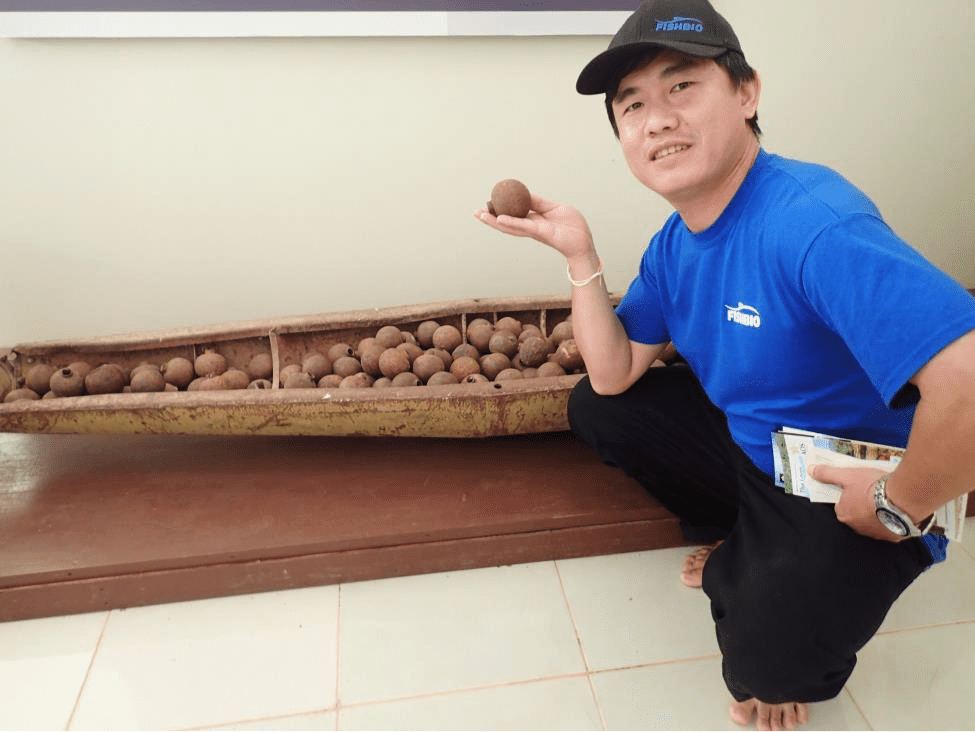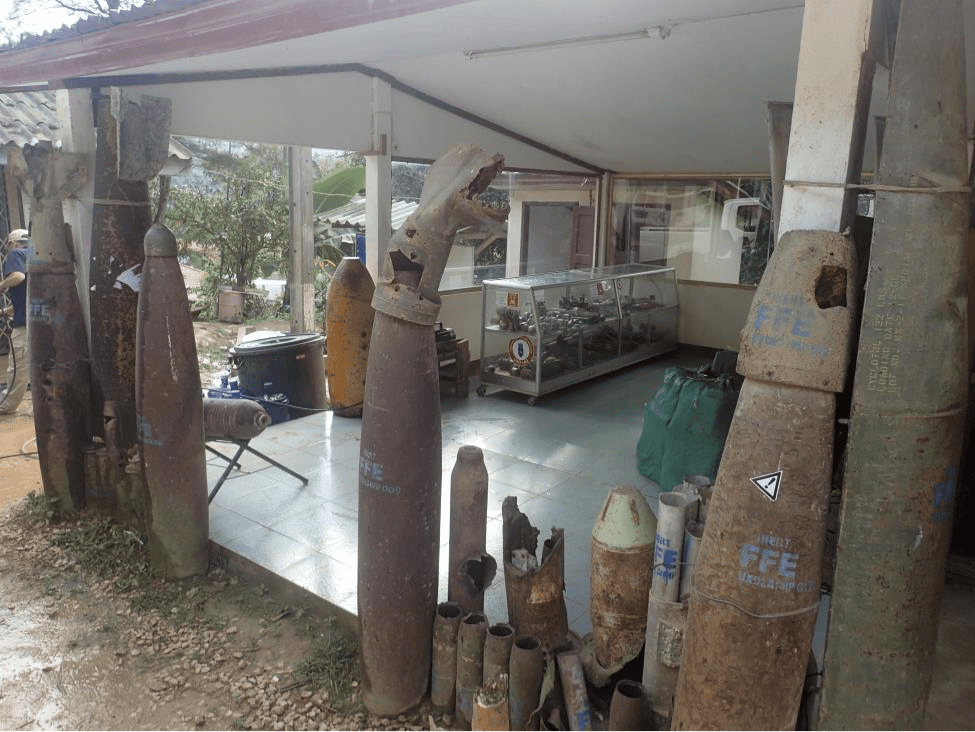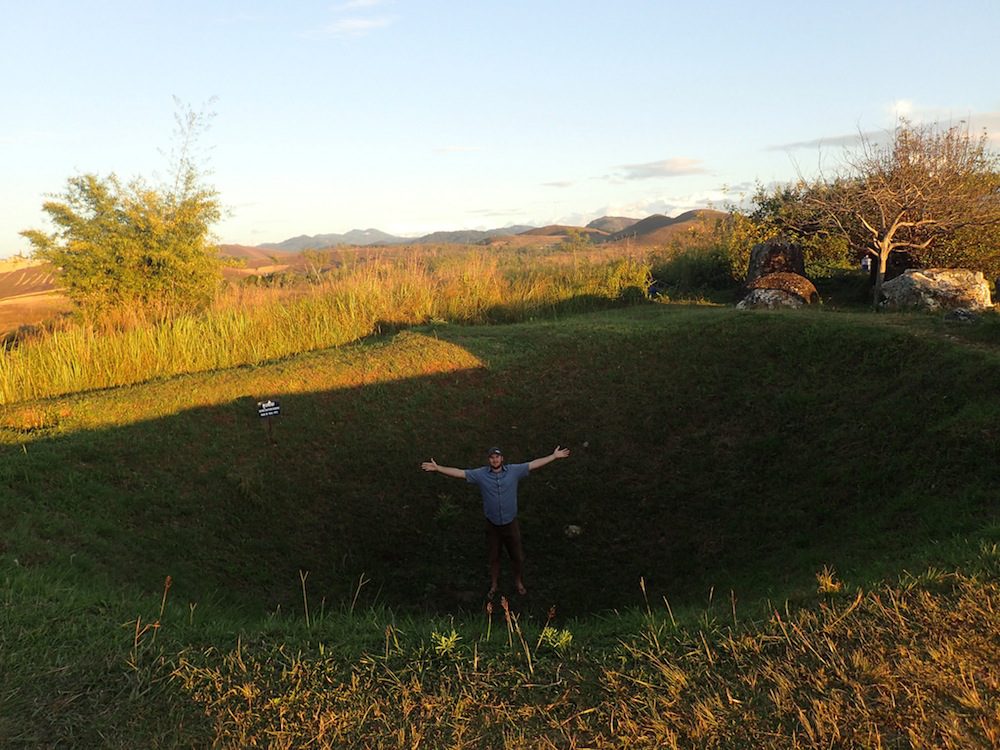Wednesday January 20, 2016
 On a recent tour of fisheries projects in the provinces of Houaphan and Xieng Khouang located in north-eastern Laos, one of our biologists noticed some interesting yard art. Upon further investigation, we quickly determined that these bomb shells were remnants of the Secret War – a largely unknown conflict between the United States and the communist party of Lao that occurred around the same time as the Vietnam War, and also included efforts to target the communist supply route called the Ho Chi Minh Trail. What’s remarkable about this conflict, besides the fact that it was largely kept a secret from American citizens, is the sheer number of bombs that were dropped by the U.S. during the nine years (1964-1973) of war.
On a recent tour of fisheries projects in the provinces of Houaphan and Xieng Khouang located in north-eastern Laos, one of our biologists noticed some interesting yard art. Upon further investigation, we quickly determined that these bomb shells were remnants of the Secret War – a largely unknown conflict between the United States and the communist party of Lao that occurred around the same time as the Vietnam War, and also included efforts to target the communist supply route called the Ho Chi Minh Trail. What’s remarkable about this conflict, besides the fact that it was largely kept a secret from American citizens, is the sheer number of bombs that were dropped by the U.S. during the nine years (1964-1973) of war.
 The American government, not wishing to get involved in another ground war, conducted the Secret War largely from the air, resulting in an unprecedented bombing attack that has never been matched in history. American planes carried out 580,000 bombing missions throughout the war; the equivalent of one bombing mission every 8 minutes, 24 hours a day, for 9 years. In all, nearly 2.5 million tons of bombs were dropped on Laos (20 tons per square kilometer), equating to roughly 2 tons of bombs for every man, woman, and child in the sparsely populated country. That is more bombs than the U.S. dropped on all countries during World War II, making Laos, with a land area just larger than Idaho, the most heavily bombed country in history (see map). Perhaps even more staggering was the amount spent waging all this destruction: nearly $500 billion in 2015 dollars, or an astounding $14 million per day.
The American government, not wishing to get involved in another ground war, conducted the Secret War largely from the air, resulting in an unprecedented bombing attack that has never been matched in history. American planes carried out 580,000 bombing missions throughout the war; the equivalent of one bombing mission every 8 minutes, 24 hours a day, for 9 years. In all, nearly 2.5 million tons of bombs were dropped on Laos (20 tons per square kilometer), equating to roughly 2 tons of bombs for every man, woman, and child in the sparsely populated country. That is more bombs than the U.S. dropped on all countries during World War II, making Laos, with a land area just larger than Idaho, the most heavily bombed country in history (see map). Perhaps even more staggering was the amount spent waging all this destruction: nearly $500 billion in 2015 dollars, or an astounding $14 million per day.
 Sadly, this is not an issue that ended with the withdrawal of US troops from the region in 1973. The vast majority of bombs that were dropped (a whopping 260 million of them) were cluster bombs. These bombs are made of an outer case that is designed to detonate in the air, scattering hundreds of bomblets over large swaths of land. As many as 30% of these bombs failed to detonate, resulting in 75 million unexploded bomblets still littering the countryside of Laos. Since 1973, more than 20,000 people have been killed or injured by unexploded ordinances (UXOs), with nearly 100 new casualties each year. As of today, less than 1% of the UXOs have been cleared by organizations such as MAG and Handicap International, as well as foreign governments, including the U.S.
Sadly, this is not an issue that ended with the withdrawal of US troops from the region in 1973. The vast majority of bombs that were dropped (a whopping 260 million of them) were cluster bombs. These bombs are made of an outer case that is designed to detonate in the air, scattering hundreds of bomblets over large swaths of land. As many as 30% of these bombs failed to detonate, resulting in 75 million unexploded bomblets still littering the countryside of Laos. Since 1973, more than 20,000 people have been killed or injured by unexploded ordinances (UXOs), with nearly 100 new casualties each year. As of today, less than 1% of the UXOs have been cleared by organizations such as MAG and Handicap International, as well as foreign governments, including the U.S.
 In spite of this harrowing and tragic history, the ingenuity and perseverance of the Lao people cannot be denied. From crafting artwork and fences to melting and casting useful tools and building boats, this military debris is used for all things imaginable. Upon passing a water-filled bomb crater in the middle of a rice field, one of our local colleagues proclaimed, “Look! A gift from America! But it’s okay, we make a fish pond.”
In spite of this harrowing and tragic history, the ingenuity and perseverance of the Lao people cannot be denied. From crafting artwork and fences to melting and casting useful tools and building boats, this military debris is used for all things imaginable. Upon passing a water-filled bomb crater in the middle of a rice field, one of our local colleagues proclaimed, “Look! A gift from America! But it’s okay, we make a fish pond.”
